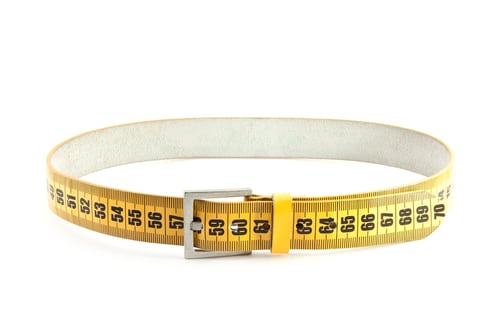 The serious health complications associated with being overweight have long been recognized. Currently, BMI (body mass index) is the most popular way to establish whether a person is at risk of weight-related health problems, but it may not be the most accurate. It is now understood that, for certain serious diseases, where your body stores fat is more significant than your overall weight. Your waist circumference, in particular, is seen as a key measurement incorrectly assessing your level of risk.
The serious health complications associated with being overweight have long been recognized. Currently, BMI (body mass index) is the most popular way to establish whether a person is at risk of weight-related health problems, but it may not be the most accurate. It is now understood that, for certain serious diseases, where your body stores fat is more significant than your overall weight. Your waist circumference, in particular, is seen as a key measurement incorrectly assessing your level of risk.
Health Problems and Waist Circumference
Your waist size is considered important because when fat is stored near vital organs it puts them under extra strain. A large waist circumference is an indicator of several potentially fatal conditions, including diabetes type 2, heart disease, and some forms of cancer. People who store most fat around their abdomen sometimes referred to as ‘apple shape’, are more likely to suffer from these diseases than people who store fat on their legs, hips, or arms, even if they have a normal BMI.
The Problem With BMI
BMI, which measures your weight in relation to your height, is used by the majority of dieters and medical professional to assess a healthy weight. However, it fails to take into account a person’s build or muscle mass. It is common for physically fit, densely-muscled athletes to be technically obese on the BMI scale. Conversely, unfit individuals who carry a lot of fat around their middle could be classed as a normal weight. These flaws have led to more and more people considering waist circumference a better indicator of overall well-being.
Healthy Waist Measurement
A healthy waist measurement will depend partly on your height. A general rule is that an unhealthy circumference is more than:
37 inches (94cm) for a man
31.5 inches (80cm) for a woman
You are thought to be at very serious risk if it is above:
40 inches (102cm) for a man
34.5 inches (88cm) for a woman
How to Measure Your Waist
To get an accurate waist measurement you should take the reading when you breathe out, and the tape should not compress your skin. The tape should be placed at the midpoint between the top of your hips and the bottom of your ribs.
If you find that your waist circumference is above normal levels, it’s a good idea to contact a dietician or doctor. They will be able to assess any health risks in more detail and give you advice on a suitable diet and exercise regime. Cutting down on sugary snack food and doing just 30 minutes of moderate intensity exercise 5 times a week is enough to make a big impact.
Related Articles By Cathe:
Body Type: Are You an Apple or a Pear and Why It’s Important to Know
Body Weight, Bmi, Waist Size – Which is the Best Indicator of Health?
Where Do You Store Your Fat? It Matters More Than You Think
Why It’s Important to Know Your Waist-to-Hip Ratio
A Better Way to Measure Body Fat?
5 Possible Biomarkers for Longevity
3 Tests that Outperform BMI for Monitoring Obesity & Health Risks

